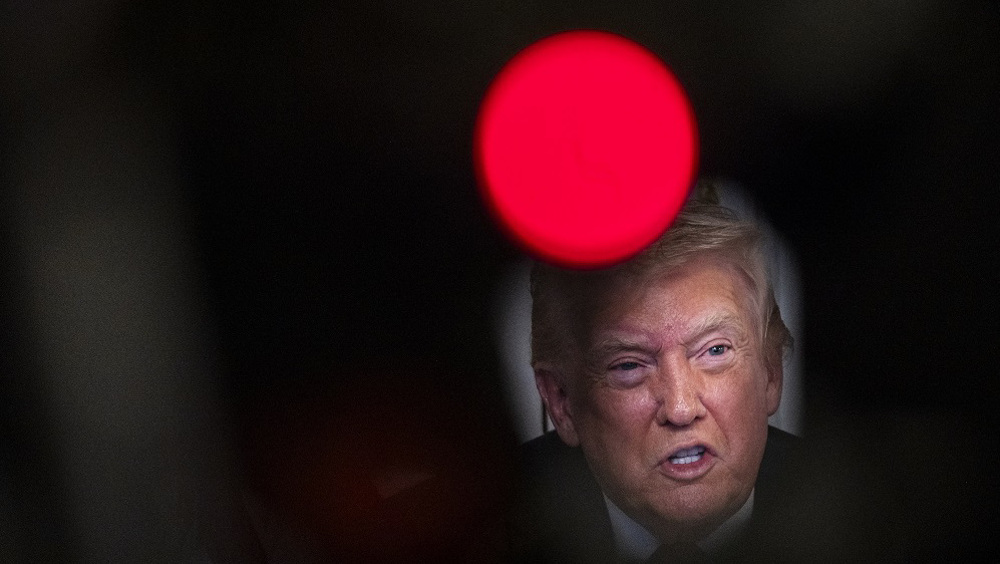US heads for another recession as retail sales post biggest drop in 12 months
US retail sales fell by the most in a year in December, pulled down by declines in purchases of motor vehicles and a range of other goods, putting consumer spending and the overall economy on a weaker growth path heading into 2023.
The second straight monthly decrease in retail sales, which are mostly goods, is undercutting production at factories. Manufacturing output recorded its biggest drop in nearly two years in December, while monthly producer prices also tumbled, other data showed on Wednesday.
The widespread signs of weakening demand and subsiding inflation are likely to encourage the Federal Reserve to further scale back the pace of its rate increases next month, but not pause its monetary policy tightening anytime soon as the labor market remains tight. The US central bank is engaged in its fastest rate hiking cycle since the 1980s.
"Consumers are likely retrenching during a time of economic uncertainty," said Jeffrey Roach, chief economist at LPL Financial in Charlotte, North Carolina. "The trajectory for the economy is weakening and recession risks are rising for 2023."
Retail sales plummeted 1.1% last month, the biggest drop since December 2021. Data for November was revised to show sales decreasing 1.0% instead of 0.6% as previously reported. Economists polled by Reuters had forecast sales decreasing 0.8%. Retail sales rose 6.0% year-on-year in December.
Retail sales are not adjusted for inflation. December's decline in sales was likely in part the result of goods prices falling during the month. Holiday shopping was also pulled forward into October as inflation-weary consumers took advantage of discounts offered by retailers.
A cold snap in December likely chilled sales at restaurants and bars. Lower gasoline prices, which impacted on receipts at service stations, also helped to knock down sales. In addition, spending is shifting back to services.
The model that the government uses to strip out seasonal fluctuations from the data has not fully adjusted for the shift to more front-loaded holiday shopping since the start of the pandemic, economists at Bank of America said.
Even accounting for the distortions, higher interest rates have raised the cost of credit, which many Americans use to finance goods purchases, eroding retail sales in recent months.
The Fed's Beige Book report on Wednesday described consumer spending as increasing "slightly, with some retailers reporting more robust sales over the holidays." But it added "retailers noted that high inflation continued to reduce consumers' purchasing power, particularly among low- and moderate-income households."

Sales at auto dealers fell 1.2%. Receipts at service stations tumbled 4.6%. Online retail sales dropped 1.1%. Furniture stores sales plummeted 2.5%. Receipts at food services and drinking places, the only services category in the retail sales report, fell 0.9%.
Electronics and appliance store sales declined 1.1%. There were also decreases in clothing stores sales as well as receipts at general merchandise stores. But sporting goods, hobby and musical instrument stores eked out gains as did building material and garden equipment suppliers.
The Fed last year raised its policy rate by 425 basis points from near zero to a 4.25%-4.50% range, the highest since late 2007. In December, it projected at least an additional 75 basis points of hikes in borrowing costs by the end of 2023.
Financial markets have priced in a 25-basis point rate increase at the Fed's Jan. 31-Feb. 1 meeting, according to CME's FedWatch Tool. Stocks on Wall Street fell. The dollar was steady against a basket of currencies. US Treasury prices rose.
Manufacturing output falls
Excluding automobiles, gasoline, building materials and food services, retail sales fell 0.7% last month. These so-called core retail sales slipped by an unrevised 0.2% in November.
Core retail sales correspond most closely with the consumer spending component of gross domestic product. The weakness in core retail sales is likely to be offset by anticipated gains in services spending. Consumer spending continues to be underpinned by labor market tightness, which is keeping wages elevated.
The unemployment rate is at a more than 50-year low of 3.5%.
"Consumers have shifted spending more toward services as they return closer to a pre-pandemic 'normal' of traveling, dining out, and attending live events," said Will Compernolle, a senior economist at FHN Financial in New York.
With inflation-adjusted consumer spending increasing 0.5% in October and being unchanged in November, economists believe growth in overall consumer spending in the fourth quarter would exceed the 2.3% annualized rate logged in the third quarter.
Gross domestic product growth estimates for the October-December quarter are as high as a 3.5% rate, also reflecting the sharpest contraction in the trade deficit in November since early 2009. The economy grew at a 3.2% rate in the third quarter. Nevertheless, the economy entered 2023 with less momentum. Wage growth is slowing and savings are also dwindling.
A separate report from the Fed showed manufacturing output dropped 1.3% in December, the largest decline since February 2021, and production in the prior month was much weaker than initially thought.
Most economists expect the economy will slip into recession by the second half of the year, though there is cautious hope that moderating inflation could discourage the Fed from boosting its target rate above the 5.1% peak it projected last month.
This would result in growth only slowing sharply rather than the economy contracting.
Inflation continues to abate, with a third report from the Labor Department showing the producer price index for final demand decreased 0.5% in December after rising 0.2% in November.
The government reported last week that monthly consumer prices fell for the first time in more than 2-1/2 years in December.
"The Fed is making progress in fighting inflation and while it's unclear if it will cause the Fed to become more dovish, it at least implies that the central bank may not need to become more aggressive in raising rates and tightening liquidity," said José Torres, senior economist at Interactive Brokers in Miami.
(Source: Reuters)
VIDEO | Free the Palestine hunger strikers in British jails ft. Calla Walsh
VIDEO | Press TV's news headlines
Iranian missile pierced window of Israeli intel chief's office in June, says senior general
VIDEO | Paper state politics
VIDEO | Press TV correspondent injured by Israeli rubber bullets in West Bank live coverage
'We will never leave all of Gaza': Israel's war minister signals permanent occupation
Greta Thunberg arrested at London protest supporting Palestine Action hunger strikers
Trump’s travel ban 2.0: Sweeping racism and Islamophobia masquerading as security










 This makes it easy to access the Press TV website
This makes it easy to access the Press TV website